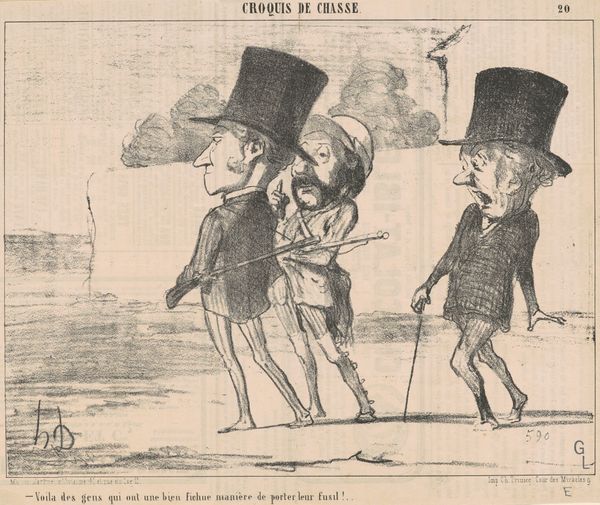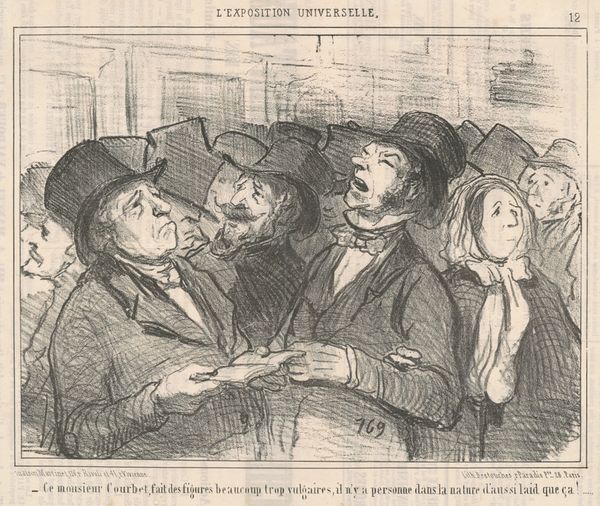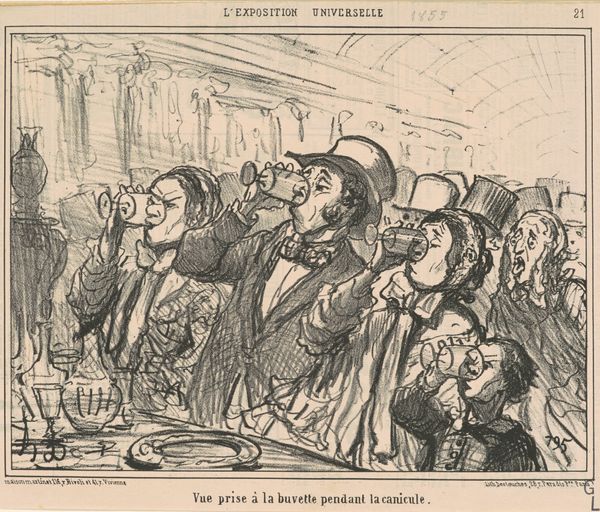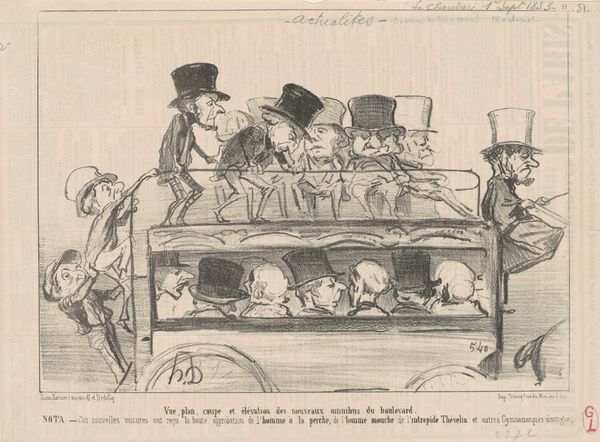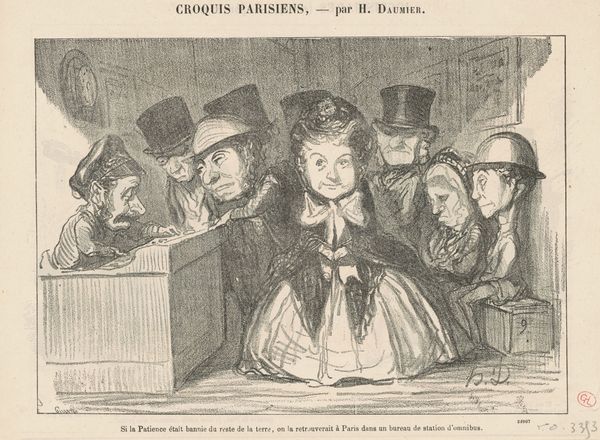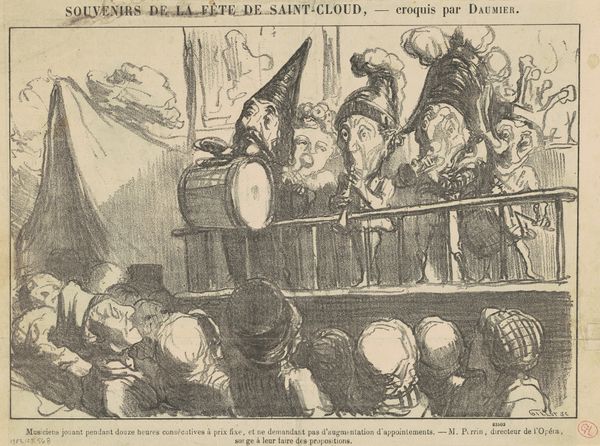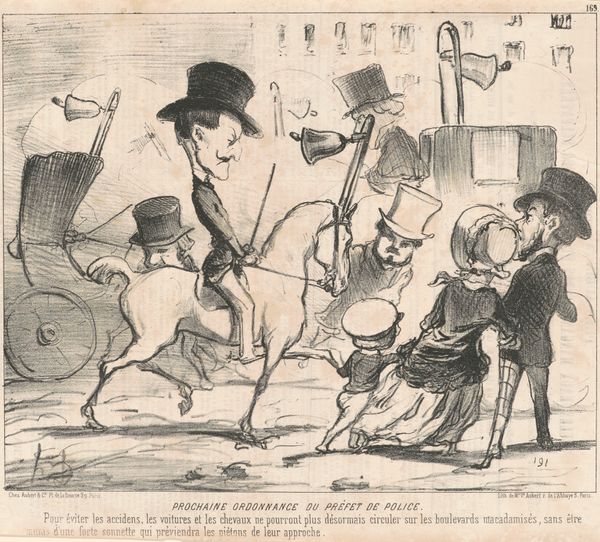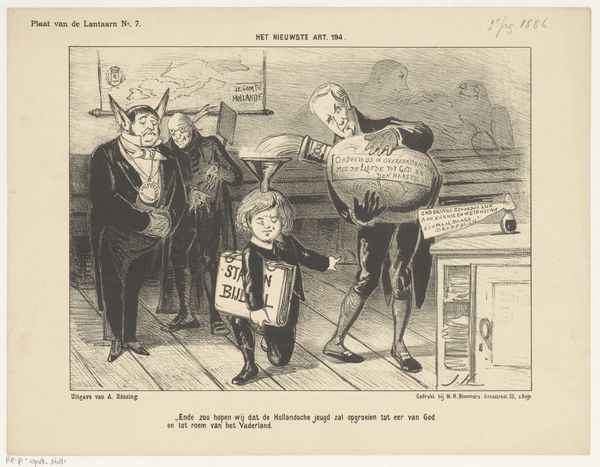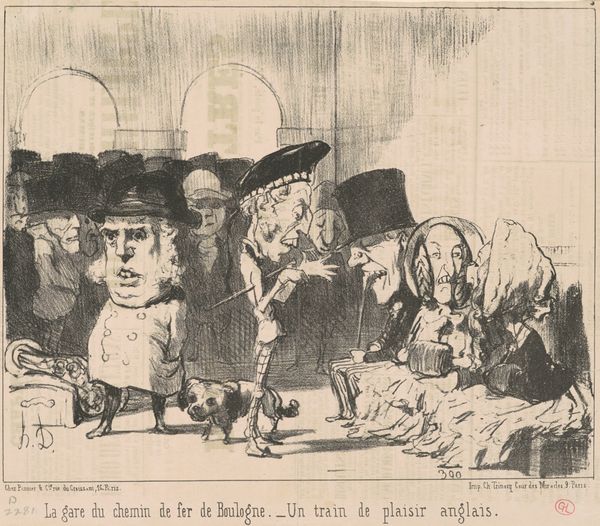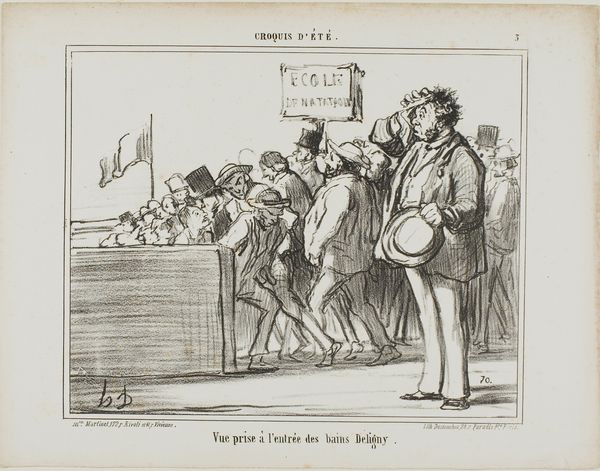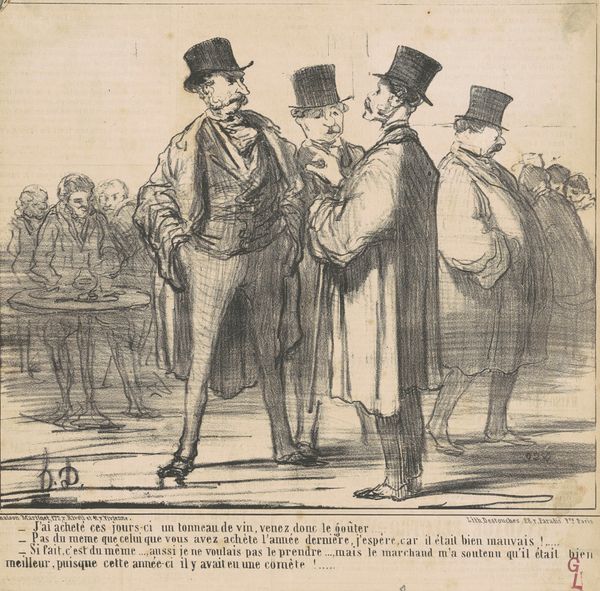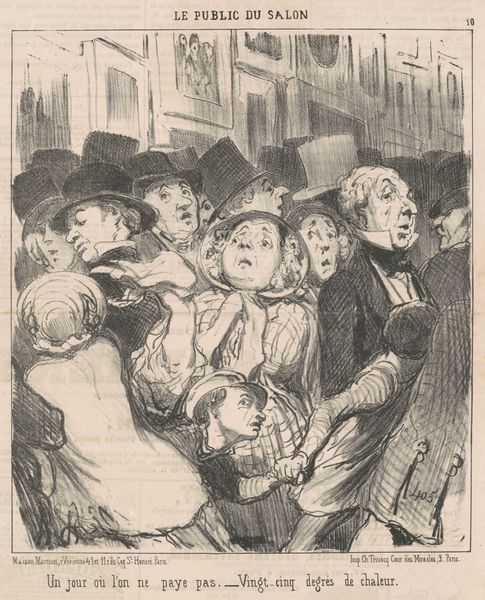
lithograph, print
#
portrait
#
comic strip sketch
#
imaginative character sketch
#
quirky sketch
#
lithograph
# print
#
caricature
#
sketch book
#
figuration
#
personal sketchbook
#
idea generation sketch
#
sketchwork
#
romanticism
#
line
#
sketchbook drawing
#
cityscape
#
genre-painting
#
storyboard and sketchbook work
#
sketchbook art
Copyright: National Gallery of Art: CC0 1.0
Curator: Honoré Daumier’s lithograph, dating from the 19th century, is titled “Sur l’Imperiale." It depicts passengers crowded atop what appears to be a horse-drawn carriage in a cityscape. Editor: My first impression is one of satirical observation. There's a raw energy in the quick, confident lines. The exaggeration of the figures gives the piece an immediate sense of dark humor, or even disdain. Curator: Absolutely. Daumier used caricature to critique French society during a time of rapid social change. Consider the term “imperiale" itself—a reference to the upper level of a public transport vehicle but also loaded with connotations of empire and control. Do you think the image plays on that double meaning? Editor: I do. The way the figures are stacked and crammed together reinforces the oppressive feeling. It's claustrophobic. Notice how Daumier uses contrasting lines—heavy in the foreground, lighter in the background—to flatten the space and compress the figures even more? Curator: Yes, the figures in the foreground loom out, as if peering over the masses, observing. It reminds me of illustrations that explore power structures within urban environments, highlighting the disconnect between different social strata. Perhaps an intentional critique of capitalist exploitation as the industrial revolution ramped up? Editor: Possibly, though I see the sketch as revealing his artistic intentions through structuralist means. The positioning and attitudes, combined with the textural differences he’s included through lithography. See how the solidity of the roof of the carriage contrasts against the feathery lines of the people above. The figures, despite their individuality, almost blend, their unique characteristics swallowed up. The artist achieves a stark sense of rhythm through these deliberate artistic methods. Curator: So, to you it's about formal elements contributing to the overwhelming sense of conformity, erasing individuality. I wonder, can it also symbolize a struggle for individuality, with each figure clinging to a sense of self? The grotesque features hinting at internal conflict within a society in flux? Editor: I agree that struggle is clearly evident in this visual shorthand; a product of a singular aesthetic impulse. Curator: I am struck again by how he used everyday scenes as vehicles for deeper commentary on political shifts. Editor: Indeed, and the sketch perfectly portrays how meaning can be formed through basic, fundamental design qualities.
Comments
No comments
Be the first to comment and join the conversation on the ultimate creative platform.
